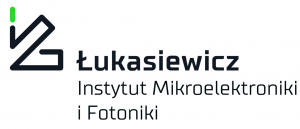
SENSOR LAB deals with the production and characterization of thin-film semiconductor compounds and modern two-dimensional structures. We study the electrical properties of these materials in terms of their application in simple electron devices such as magnetic field sensors. Research works at SENSOR LAB are aimed at developing and modifying the structure of the tested sensors to adapt their properties to work in extremely difficult environments, such as cryo / high temperatures, conditions of strong irradiation, etc.
LOCATION: PIOTROWO Campus, HALL A21B, room F5
OUR EQUIPMENT:
We are equipped with a unique vacuum apparatus for the production of thin semiconductor, metallic and insulating layers. We very often build our equipment ourselves, adjusting its capabilities to our needs.
The main techniques we use to produce thin films are the flash evaporation method and physical vapor deposition.
We have the possibility of electric characterization of the produced materials thanks to the equipment for conducting galvanomagnetic measurements. In our laboratory, we have 2 independent measuring systems at our disposal: a stand equipped with an electromagnet (0 T – 1 T), and the ![]() stand equipped with a permanent magnet (0.7 T). Both systems enable measurements of the Hall effect in a wide temperature range (115 K – 825 K).
stand equipped with a permanent magnet (0.7 T). Both systems enable measurements of the Hall effect in a wide temperature range (115 K – 825 K).
WHAT DO WE PRODUCE AND INVESTIGATE?
The structures that we produce at SENSOR LAB are based on active channels made of thin layers of semiconductors, two-dimensional semi-metals, and layered materials.
The active channels of our structures are often given specific shapes, the so-called Hall crosses, in the process of optical lithography. Thanks to this, we optimize the measurement capabilities of the future sensor.
It also works the other way around – the precisely defined geometry of Hall’s cross allows us to very accurately characterize the material from which we make the active channel of the future sensor.
In addition to the active channel, an indispensable element of each Hall structure is the electrode system enabling the integration of the produced structure with the existing measuring system. We also make electrodes using the processes of optical lithography and vacuum deposition of metallic layers.
SENSOR LAB ON RESEARCHGATE
RESEARCH TOPICS:
Exploring the limits of indium antimonide toward the development of magnetic field sensors for extreme environments

![]() MAGSET, LIDER/8/0021/L-11/19/NCBR/2020, Magnetic field sensors for industrial applications in extreme temperature ranges
MAGSET, LIDER/8/0021/L-11/19/NCBR/2020, Magnetic field sensors for industrial applications in extreme temperature ranges

![]() UMO-2012/07/N/ST5/00207, Investigation of the influence of neutron irradiation on the electrical properties of InGaSb thin films
UMO-2012/07/N/ST5/00207, Investigation of the influence of neutron irradiation on the electrical properties of InGaSb thin films

![]() 7th FP EU, Development of high-temperature Hall sensors for future applications in the measurement of the magnetic field in fusion reactors
7th FP EU, Development of high-temperature Hall sensors for future applications in the measurement of the magnetic field in fusion reactors
 Investigation of physical properties of two-dimensional structures and layered materials for applications in magnetic field detection
Investigation of physical properties of two-dimensional structures and layered materials for applications in magnetic field detection

![]() 2019/35/O/ST5/01940, Investigation of the physical properties of thin-film metal / PtSe2 interfaces
2019/35/O/ST5/01940, Investigation of the physical properties of thin-film metal / PtSe2 interfaces

![]() GRAFMAG, GRAF-TECH/NCBR/12/14/2013, Graphene magnetic field sensors for industrial applications. Task: Fabrication of a graphene EMR sensor for the needs of a current transformer
GRAFMAG, GRAF-TECH/NCBR/12/14/2013, Graphene magnetic field sensors for industrial applications. Task: Fabrication of a graphene EMR sensor for the needs of a current transformer
 Exploring the planar configuration of extraordinary magnetoresistance
Exploring the planar configuration of extraordinary magnetoresistance

![]() UMO-2012/07/N/ST8/03911, Modeling the phenomenon of Extraordinary Magnetoresistance in newly developed hybrid metal-semiconductor structures using the Finite Element Method
UMO-2012/07/N/ST8/03911, Modeling the phenomenon of Extraordinary Magnetoresistance in newly developed hybrid metal-semiconductor structures using the Finite Element Method







